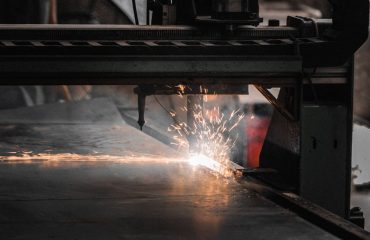In today’s rapidly evolving business landscape, organizations that prioritize continuous improvement are the ones that thrive. A culture of continuous improvement, often referred to as Kaizen, isn’t just a buzzword; it’s a fundamental shift in mindset and operational approach that fosters innovation, efficiency, and sustained growth. This post explores the key elements of building and maintaining such a culture.
1. Fostering a Culture of Open Communication and Feedback
The foundation of any successful continuous improvement initiative is open communication. Employees at all levels must feel empowered to identify problems, share suggestions, and provide constructive criticism without fear of retribution. This requires creating a safe space where feedback is valued, not just tolerated. Implement regular feedback mechanisms, such as employee surveys, suggestion boxes, and one-on-one meetings, to gather insights and encourage participation. Transparency is crucial; share improvement goals, progress updates, and success stories with the entire team to build collective ownership and motivation.
Furthermore, actively listen to and address employee concerns. When employees feel heard and their input is genuinely considered, they are more likely to be engaged in the improvement process. Implement systems for tracking and addressing feedback, demonstrating that their contributions are valued and acted upon.
2. Empowering Employees at All Levels: Ownership and Accountability
Continuous improvement isn’t solely the responsibility of management; it’s a collective effort. Empowering employees to identify and solve problems within their areas of expertise is crucial. This involves providing them with the necessary training, resources, and authority to make decisions and implement changes. Delegation of responsibility, coupled with clear accountability, fosters a sense of ownership and encourages proactive problem-solving.
Implement cross-functional teams to tackle complex issues, allowing employees from different departments to collaborate and share perspectives. Encourage employees to take initiative and propose solutions, even if they fall outside their immediate job descriptions. Celebrate successes, both big and small, to reinforce positive behaviors and encourage continued participation.
3. Implementing Data-Driven Decision Making
Effective continuous improvement relies on data-driven decision-making. Track key performance indicators (KPIs) relevant to your organization’s goals. This could include metrics such as customer satisfaction, defect rates, lead times, and employee productivity. Regularly analyze this data to identify areas for improvement and measure the effectiveness of implemented changes.
Utilize data visualization tools to make the data easily understandable and accessible to all employees. This allows everyone to see the impact of their contributions and understand the overall progress towards improvement goals. Establish a system for collecting, analyzing, and reporting data consistently, ensuring that decision-making is informed and objective.
4. Embracing Lean Principles and Methodologies
Lean methodologies, such as Six Sigma and Kaizen, provide a structured framework for continuous improvement. These approaches emphasize eliminating waste, streamlining processes, and improving efficiency. Implementing these methodologies involves identifying and eliminating non-value-added activities, optimizing workflows, and reducing variability in processes.
Training employees in Lean principles and tools empowers them to identify and address inefficiencies within their respective areas. This could involve using tools such as value stream mapping, 5S methodology, and root cause analysis to systematically identify and eliminate waste. Regularly review and update processes to ensure they remain efficient and effective.
5. Building a Culture of Continuous Learning and Development
Continuous improvement is an ongoing journey, not a destination. To sustain improvement efforts, organizations must invest in the continuous learning and development of their employees. Provide opportunities for employees to enhance their skills and knowledge in areas relevant to continuous improvement, such as problem-solving, process improvement methodologies, and data analysis.
Encourage employees to participate in training programs, workshops, and conferences related to continuous improvement. Foster a culture of knowledge sharing by encouraging employees to share best practices and lessons learned. Create a learning environment where experimentation and innovation are encouraged, even if it means occasional setbacks. Celebrate learning as a key component of the continuous improvement process.
By implementing these strategies, organizations can cultivate a thriving continuous improvement culture that drives sustained growth, increased efficiency, and enhanced employee engagement. Remember that building this culture takes time and consistent effort, but the rewards are well worth the investment.
SEO-Friendly Tags:
- Continuous Improvement
- Kaizen Culture
- Lean Management
- Process Improvement Strategies
- Organizational Excellence




